The conv function is right up your alley:
>> x = 1:8;
>> y = conv(x, ones(1,5), 'valid')
y =
15 20 25 30
Benchmark
Three answers, three different methods... Here is a quick benchmark (different input sizes, fixed window width of 5) using timeit; feel free to poke holes in it (in the comments) if you think it needs to be refined.
conv emerges as the fastest approach; it's about twice as fast as coin's approach (using filter), and about four times as fast as Luis Mendo's approach (using cumsum).

Here is another benchmark (fixed input size of 1e4, different window widths). Here, Luis Mendo's cumsum approach emerges as the clear winner, because its complexity is primarily governed by the length of the input and is insensitive to the width of the window.

Conclusion
To summarize, you should
- use the
conv approach if your window is relatively small,
- use the
cumsum approach if your window is relatively large.
Code (for benchmarks)
function benchmark
clear all
w = 5; % moving average window width
u = ones(1, w);
n = logspace(2,6,60); % vector of input sizes for benchmark
t1 = zeros(size(n)); % preallocation of time vectors before the loop
t2 = t1;
th = t1;
for k = 1 : numel(n)
x = rand(1, round(n(k))); % generate random row vector
% Luis Mendo's approach (cumsum)
f = @() luisMendo(w, x);
tf(k) = timeit(f);
% coin's approach (filter)
g = @() coin(w, u, x);
tg(k) = timeit(g);
% Jubobs's approach (conv)
h = @() jubobs(u, x);
th(k) = timeit(h);
end
figure
hold on
plot(n, tf, 'bo')
plot(n, tg, 'ro')
plot(n, th, 'mo')
hold off
xlabel('input size')
ylabel('time (s)')
legend('cumsum', 'filter', 'conv')
end
function y = luisMendo(w,x)
cs = cumsum(x);
y(1,numel(x)-w+1) = 0; %// hackish way to preallocate result
y(1) = cs(w);
y(2:end) = cs(w+1:end) - cs(1:end-w);
end
function y = coin(w,u,x)
y = filter(u, 1, x);
y = y(w:end);
end
function jubobs(u,x)
y = conv(x, u, 'valid');
end
function benchmark2
clear all
w = round(logspace(1,3,31)); % moving average window width
n = 1e4; % vector of input sizes for benchmark
t1 = zeros(size(n)); % preallocation of time vectors before the loop
t2 = t1;
th = t1;
for k = 1 : numel(w)
u = ones(1, w(k));
x = rand(1, n); % generate random row vector
% Luis Mendo's approach (cumsum)
f = @() luisMendo(w(k), x);
tf(k) = timeit(f);
% coin's approach (filter)
g = @() coin(w(k), u, x);
tg(k) = timeit(g);
% Jubobs's approach (conv)
h = @() jubobs(u, x);
th(k) = timeit(h);
end
figure
hold on
plot(w, tf, 'bo')
plot(w, tg, 'ro')
plot(w, th, 'mo')
hold off
xlabel('window size')
ylabel('time (s)')
legend('cumsum', 'filter', 'conv')
end
function y = luisMendo(w,x)
cs = cumsum(x);
y(1,numel(x)-w+1) = 0; %// hackish way to preallocate result
y(1) = cs(w);
y(2:end) = cs(w+1:end) - cs(1:end-w);
end
function y = coin(w,u,x)
y = filter(u, 1, x);
y = y(w:end);
end
function jubobs(u,x)
y = conv(x, u, 'valid');
end

